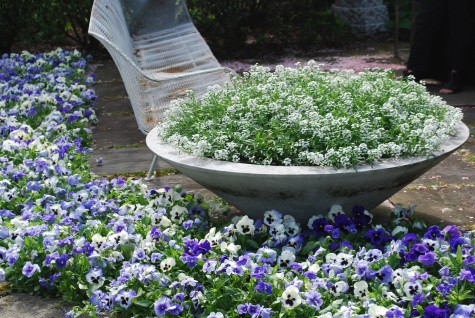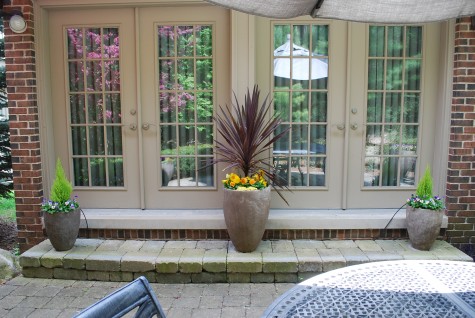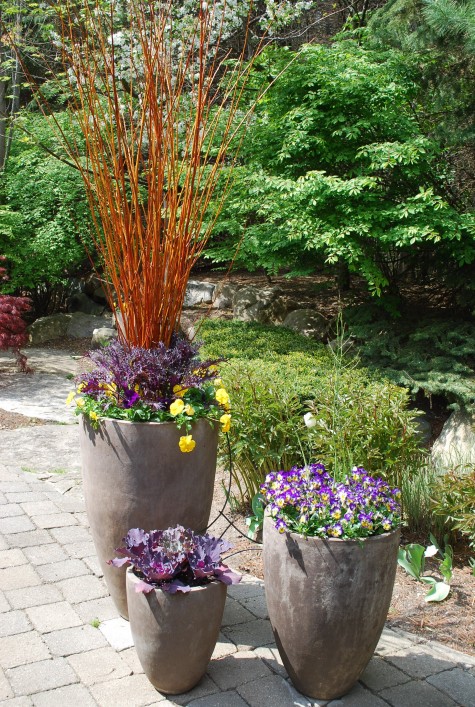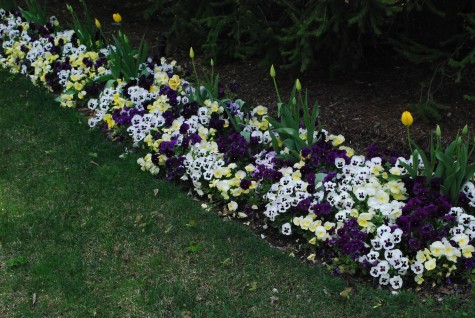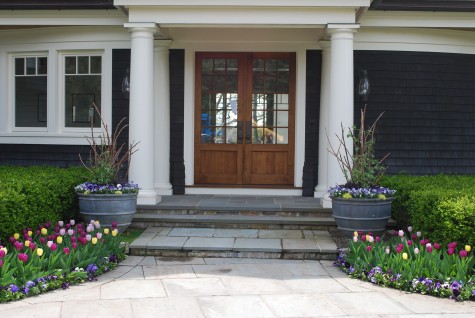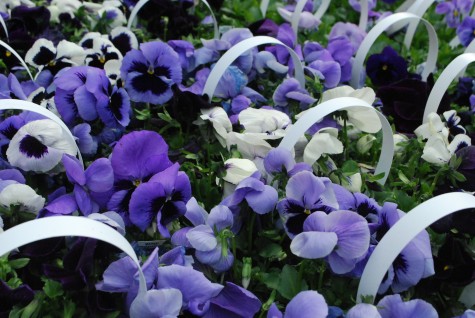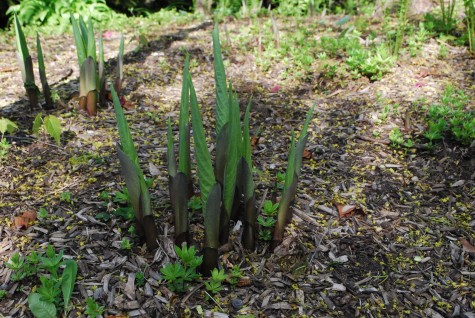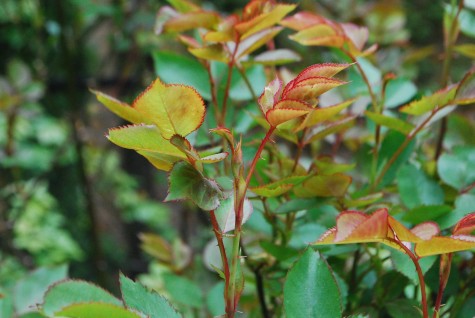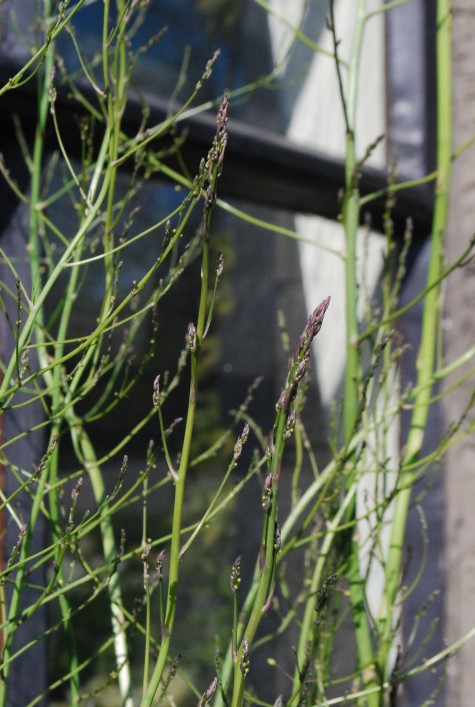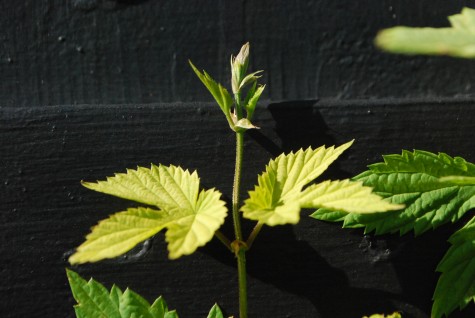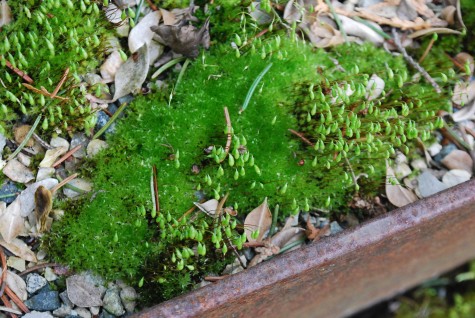Blue in a Michigan garden? That would be blue pansies and lobelia. OK, there are some true blue delphiniums, and cornflowers to come later on. But if you have a big love for blue, express yourself now.
Bright yellow and dark purple pansies, orange grass, and cream stick stacks-a spring wake up call.
Creme brulee heuchera-great in pots. The habit, the leaf size and shape-and that color-the stuff that spring memories are made of. I am not crazy about black and silver leaved coral bells, but these enchant me. The backs of the leaves-a faint version of red violet-echoing the punch of red violet from these dark pansies.
Fresh cut copper willow twigs, and a spring assortment. I like lots of spring voices looking for a little harmony. This-a simple pleasure.
Picoteed and whiskered violas-I love them all. They look especially at home in small low terra cotta pots-bulb pans, we call them.
On the right, a trailing viola I have never seen before. It may be my favorite bicolor viola-what a treat that it trails. Pale blue and dark purple-stunning. On the left, clear sky yellow pansies and angelina. Prairie and copper willow provide a little natural vertical interest.
Lemon cypress and dark red dracaena contrast dramatically with each other. The softening part? lavender and peach violas with that lime. Citrus mix pansies and Ogon sedum with that dark spike.
Ornamental kales and cabbages are great for spring pots-they will grow to a decent size before they bolt. Barely visible in the right pot, a one gallon pot of asparagus.
Green spikes are common in summer pots-but they handle the cold in the spring and fall very well. Any ordinary plant used in an unusual season warrants a fresh look.
This tuft of a lime cypress will grow up to a shrub of considerable size, should you baby it over a few winters. That lime green says spring like no other color. Other choices? Bibb and leaf lettuce. Green oakleaf lettuce. Lime green hostas. Lime green hops. Lime green leaved columbines and bleeding hearts. Green flowered hellebores. Lime green leaved tradescantia. You get the idea. 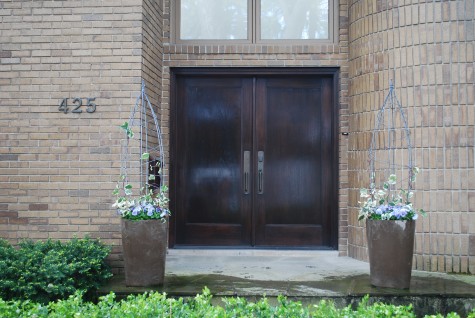
Any spring pot makes a better show right off the bat with a plant climber in place. Some seasons ask for a little backup from some structure. In this case, steel structure. Given a few weeks of warm weather, these blue pansies and white variegated ivy will grow, and make a better statement. All of these plantings need to grow on and up. But today, these freshly planted pots still say welcome to my spring.
